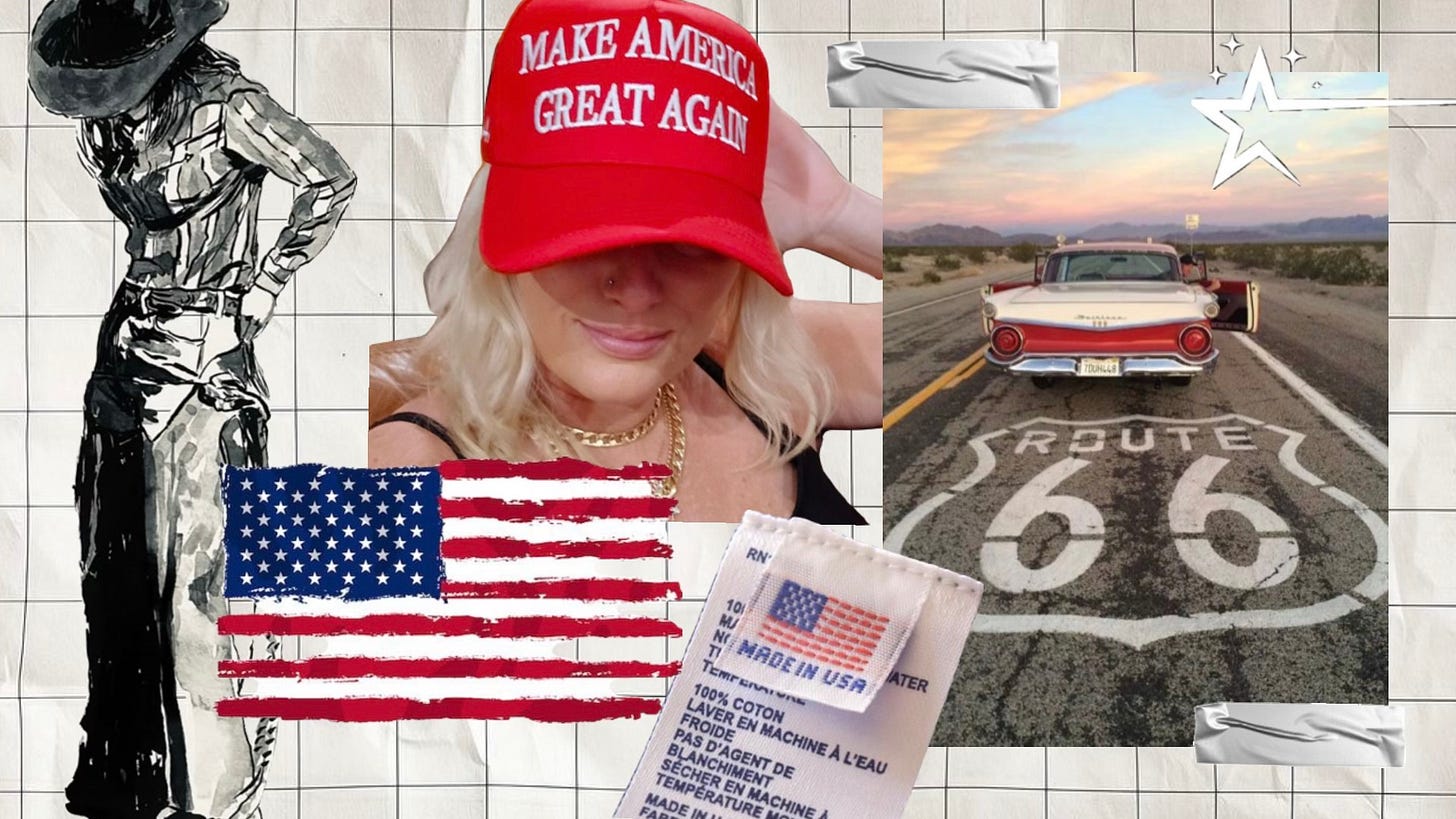Tariffs, Trade Wars, And Fashion’s Uncertain Future
Make trade expensive again: the fashion industry’s unwanted makeover
The fashion industry has been caught in the hemline of economic nationalism. And thanks to some tariff back and forth, this industry analysis takes a look at why the cost of getting dressed now comes with a geopolitical price tag.
If you thought the pause in the trade war between China and the US announced this week was the end of things, then think again. The fashion industry isn’t out of hot water just yet.
Let’s be clear: the tariff rises making the rounds weren’t born from a desire to rescue American apparel manufacturing from the ashes like some Levi-clad phoenix. No, this is economic cosplay, starring Trump as the tough-talking protectionist hero fighting off big, bad China.
Fashion thrives on a warped kind of logic — nimbleness, global supply chains, and razor-thin margins. When a designer in the West can sketch something at noon, a factory in Guangdong can produce it by midnight the next day, and it’s on a TikTok influencer by the next week, tariff rises are like dropping a rotary phone into a 5G world.
Tariff increases don’t just raise costs; they punch a hole in the very fabric of how fashion operates. For big retailers, this means either hiking prices (hello inflation) or slashing profit margins (RIP quarterly earnings). For smaller designers and indie brands, it’s worse. They get caught in a cost spiral, unable to absorb the financial blow or pass it onto customers who, thanks to stagnant wages, can’t pay for it anyway.
Of course, the stated goal in this is to bring manufacturing back to America. A noble dream, if a little threadbare. Labour costs are too high, and you can’t offset that by simply shouting “America First” at a sewing machine. The result? Manufacturers suffer a bit, American consumers suffer more, and the East picks up the scraps.
Meanwhile, sustainability takes a hit. The rerouting of supply chains, trial-and-error sourcing, and redundant production lead to more emissions, more waste, more ugh. It’s not the ethical fashion industry we were promised.
And let’s not ignore the cultural irony: Trump’s voter base, disproportionately rural and lower-middle class, will end up paying more for imported work boots, polyester pants, and those Made in China ‘Make America Great Again’ hats. It’s like writing checks to your ex while claiming you’ve moved on.
We’re heading toward a pricier, messier, and more chaotic fashion industry, one that’s learning to sidestep America when convenient and outwit Washington when necessary. And if there’s a moral to this story, it’s that economic policy isn’t an off-the-rack fit. Tariff increases are one-size-fits-none. Except maybe for the irony. That’s custom-made.
The Analysis
So, how did we get here?
Trump has decided that America is losing. At everything. But especially at trade. The solution? Tariffs. Lots of them. A 20th-century tool for a 21st-century problem, wielded like a blunt weapon. And so began the great American experiment in economic warfare, one that would leave the fashion industry caught between a MAGA hat and a hard place.
This is supposed to be about bringing back American jobs and rebalancing trade deficits. In reality, it's more akin to a high-stakes cosplay of 1980s protectionism, minus the hair metal and with worse suits. The fashion industry, which depends on fast, cheap, and global supply chains, has become collateral damage in a trade war dressed up as patriotism.
Here’s the kicker: the American apparel industry had been hollowed out long before Trump. Since the 1990s, thanks to NAFTA, the WTO, and the rise of the East as a manufacturing hub, clothing production has moved offshore. Not because corporations hate America, but because American consumers love $12 leggings and don’t want to pay $70 for a union-made hoodie. You can’t have Walmart prices and Detroit wages — it’s one or the other.
But let’s not kid ourselves, this isn’t just an economic decision. It's cultural theatre. This is as much about trade as it is about signalling: to blue-collar voters, to Rust Belt towns, to the nostalgia-drunk idea that America could go back to being a nation that made everything. The irony? The very people cheering for these tariffs are often the ones most hurt by them. The working-class dad in Iowa doesn’t get a raise, but he does get a pricier flannel.
Where Trump wanted to punish China, he may have ended up accelerating the regional diversification they’d already been preparing for. Chinese manufacturers? They could start building factories elsewhere. Trade routes won't collapse. They’ll reroute, sidestepping America altogether.
Supply chain whack-a-mole means more shipping, more emissions, more waste. Tariffs won't just increase prices, they'll increase fashion's carbon footprint. Culturally, this exposes America’s ongoing identity crisis: a desire to lead the global economy while pretending globalisation is optional.
The key players shaking things up.
When Trump stormed into the global economy with his Made in America mood board and a pair of tariff scissors, the fashion world found itself abruptly out of season and under siege. The industry, a sector allergic to friction and fueled by fast turnarounds, suddenly had to pay more to produce the same cheap things it had always been praised (and shamed) for producing cheaply. How terribly unfashionable.
Independent designers, already existing somewhere between passion projects and financial ruin, will take a direct hit. While big brands have the resources to diversify suppliers or simply pass the price hike onto customers (aka most of you reading this), indie labels are stuck holding the invoice.
As for heavy hitters such as Nike, Adidas, Skechers and Under Armour, they won’t take this lying down. They're asking to be exempt from the tariff increases as they pose an "existential threat" to the industry. Funny how they weigh in when it's their bottom line that’ll suffer.
Meanwhile, policymakers pretended this was a war worth fighting while conveniently ignoring that 97% of clothes sold in the U.S. are imported. You can’t tariff your way back into a domestic industry you gutted decades ago.
Where does this leave American workers? Surely they'll benefit? Not quite.
Textile mills won’t reopen overnight. Sewing jobs won’t materialise out of thin air. Instead, communities already struggling under economic precarity will find themselves paying more for basics, because tariff rises aren’t taxes on countries, they’re taxes on people. Especially working-class Americans.
And in case you needed proof of the real-world impact tariff rises are having on fashion and Americans, take a little look at this TikTok…
 Tiktok failed to load.
Tiktok failed to load.Enable 3rd party cookies or use another browser
Does the data support?
Let’s talk numbers. Because if there’s anything that punctures the inflated self-importance of political theatre, it’s cold, unsexy data.
Keep reading with a 7-day free trial
Subscribe to Fashion Tingz to keep reading this post and get 7 days of free access to the full post archives.






